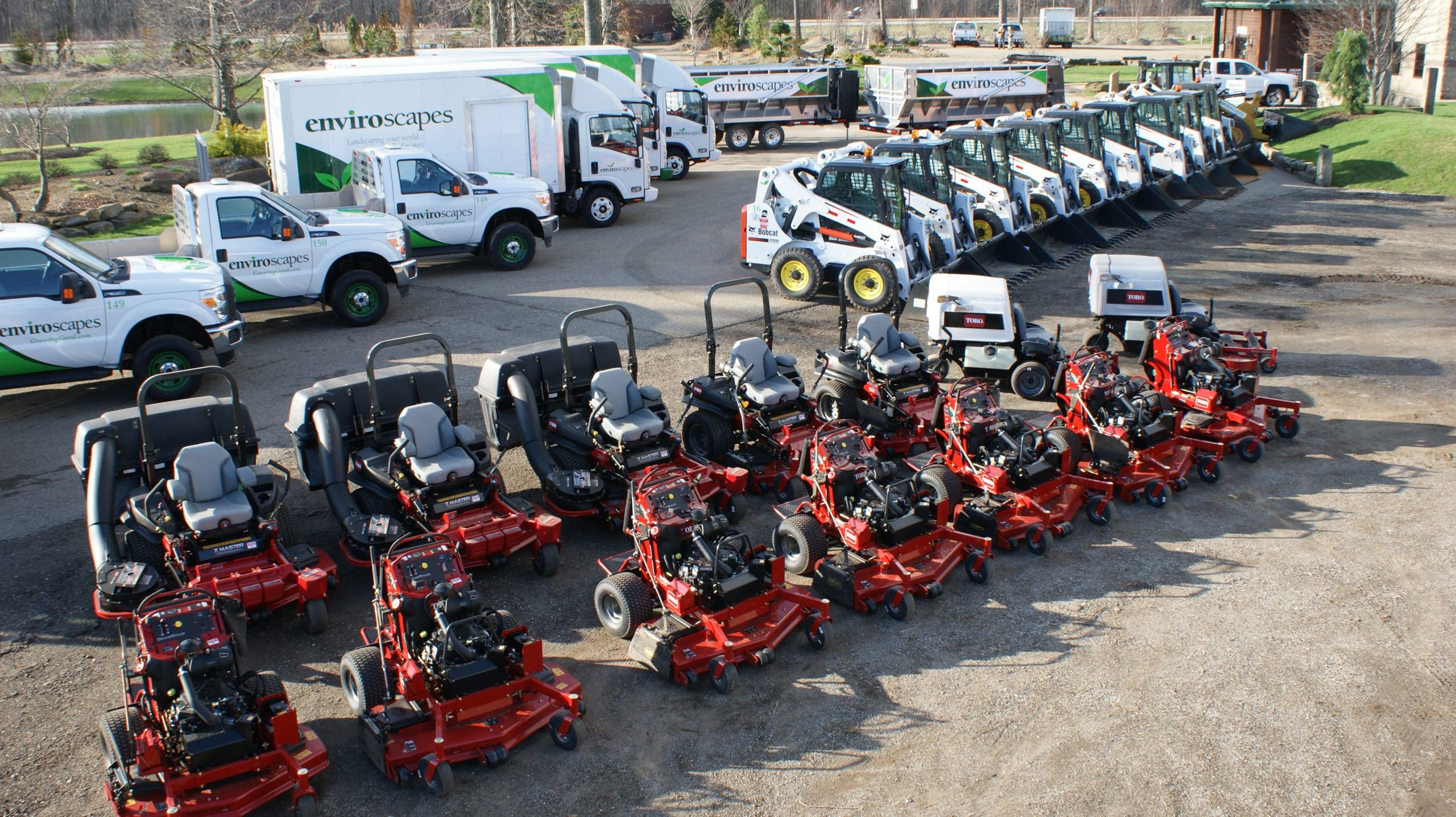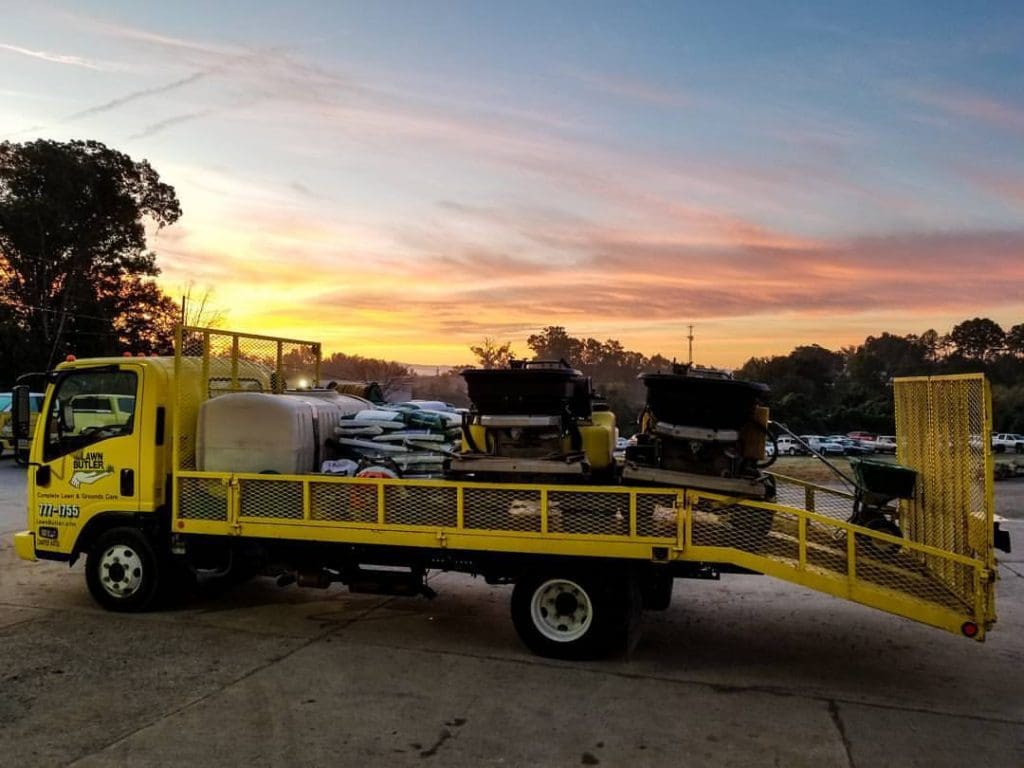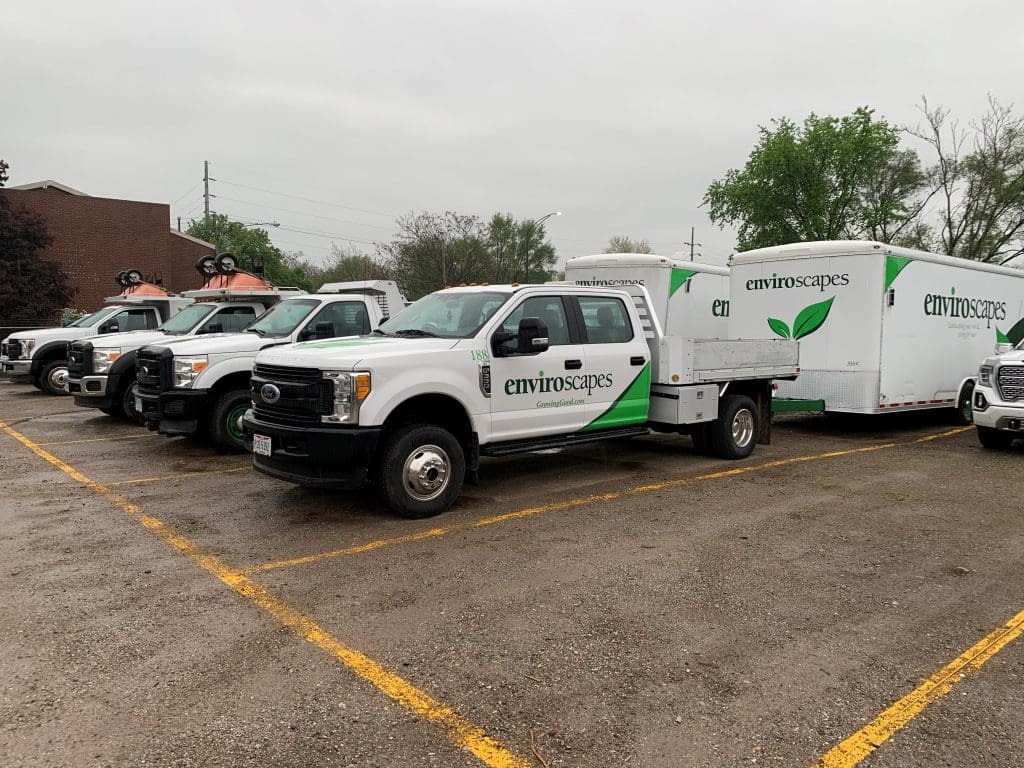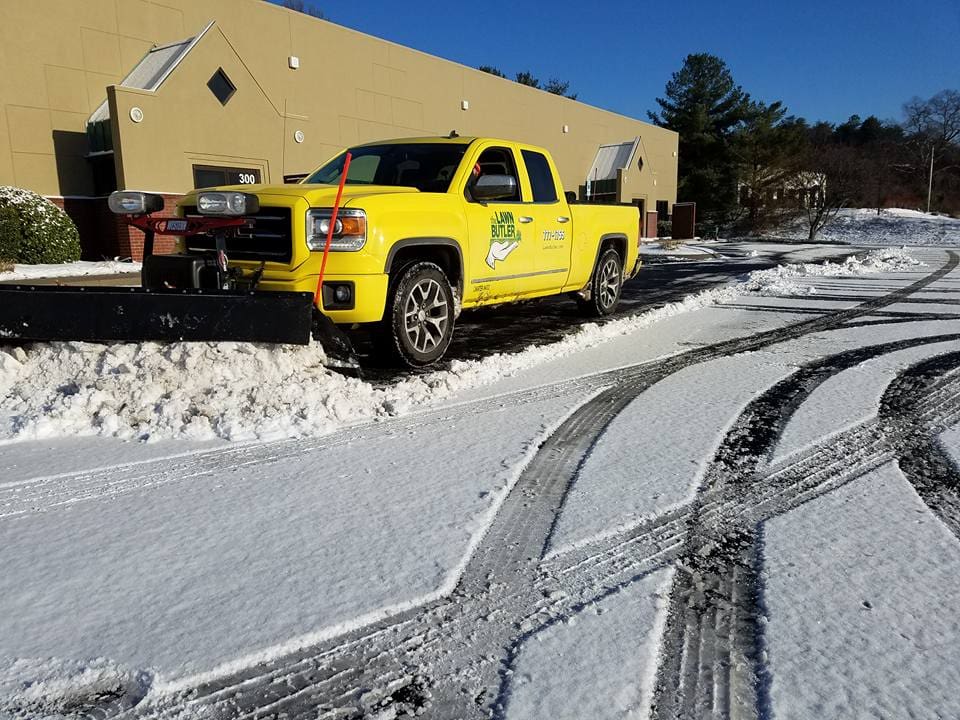
To buy new or used equipment, that is the question. While everyone likes the idea of an all-new fleet, there’s nothing wrong with operating with a fleet of used equipment or a mixture of both.
It really all comes down to where you’re at in the business as one size does not fit all. Todd Pugh, founder and CEO of Enviroscapes, based in Louisville, Ohio, and Seth Kehne, owner of Lawn Butler, based in Knoxville, Tennessee, share how they went from all used fleets to almost all new equipment.
They share the benefits of both types of fleets and what landscape professionals should consider when it comes to their next equipment purchases. Whether you buy new or used equipment comes down to if you have the revenue to support it and the hours to put on it.
“Most landscape companies drive to a job site, and park for the whole day,” Pugh says. “So, I think a lot of guys make mistakes by buying expensive trucks because they look cool, where they’d be better suited to buy equipment or machinery that would make them more efficient.”
Pros and Cons of Buying Used
Both companies started out buying all used equipment. Pugh says he started with a push mower and at one point he had seven different brands of trucks in his fleet. He says that when you’re a startup it’s all about survival so buying new equipment early on can burden you with a lot of debt.
Pugh advises before you buy anything you need to know what the return on investment is.
“The biggest thing I see with other landscape contractors is they just don’t know their business,” Pugh says. “They buy shiny stuff and they don’t know what the return on that shiny stuff is going to be. We love shiny stuff, but we also want it to make us money.”
Now, Enviroscapes mostly buys big-ticket items used. For instance, the company will buy single axle landscape trucks that are five years old with 100,000 miles on them because Enviroscapes might put 10,000 miles on them. Pugh says if you buy one new it could cost $125,000 to $150,000 but if you buy them used you can get them for $30,000 or $40,000 and the trucks still have 10 years of useful life with little predicted repairs and/or maintenance.
“Trucks don’t really make us money in this industry,” Pugh says. “It’s more of a way of transportation. So, the majority of the used equipment that we would buy would be heavier duty trucks for salt spreaders and heavier-duty trucks for design/build.”

For Kehne, it was mainly cash flow that kept them buying used equipment early on. Lawn Butler operates debt-free in the beginning it was harder to grow with cash only.
Kehne says they bought used equipment from Craigslist, eBay and auctions. He says he enjoys looking for equipment so he would search for used machines at night. Kehne says he looks at the hours on the equipment and then the age of the piece. Right now, they only buy equipment that is a year or two old if they buy used.
“Any time you buy used you’ve got more risk,” Kehne says. “So not only you’re going to have more repairs but then you also have how you don’t know how it was abused. We bought equipment before where they’ve been rolled and that was hidden from us.”
Pros and Cons of Buying New
Kehne says when they had about 75 employees, they began buying new equipment. First, it was new two-cycle equipment, then smaller equipment under $10,000, then new trucks and new skid steers.
“The bigger you get the more downtime hurts,” Kehne says. “It was easier to pivot when you were smaller.”
Once they had a better understanding of how much downtime cost them, buying new made more sense.
“Sometime the more you pay now the less you pay later,” Kehne says. “In the beginning, it took us a long time to understand that. We would go with the less you pay now and down the road, it cost us a lot more later.”
By the time Enviroscapes hit the $1 million revenue mark, Pugh says they had a model of what the company looked like and what equipment they needed. They buy all new equipment for their maintenance work like string trimmers, backpack blowers and mowers. This includes trucks and box trailers. Pugh says they keep trucks for 7 years, box trailers for 10 years and mowers for 3 years. When the string trimmers or backpack blowers begin to need to be repaired they are replaced.

“The reason we do that is that work is very scheduled,” Pugh says. “They’re maintenance contracts that might go for three to five years so the variability in that business is very small. We’re running six branch locations, and about 75 maintenance crews so we want consistency. That consistency stems from training the operator on how to run the same mower to driving the same truck to keeping the same parts on the shelves for maintenance.”
Rather than buying used mowers of various brands, Enviroscapes can train their crews on the same piece of equipment.
“It also helps us really understand the true cost per hour to operate,” Pugh says. “All of our mowers are under warranty as long as we own them. So, the cost of ownership is known ahead of time.”
Streamline Your Fleet
Pugh says it took them five to 10 years to streamline to where they had the same brand of mowers and the same brand of trucks.
“It’s not because one brand is better than the other,” Pugh says. “A lot of it comes down to where’s the best dealer at? Who can service you?”

Another reason Pugh says he decided to buy one brand for his fleet is because it helps eliminate the amount of stock you need on hand to service each brand and it simplified their maintenance needs.
“If you had 10 different brands of mowers in your fleet, you potentially could have 10 different sizes of tires,” Pugh says. “If you have one spare for each mower you might have 40-50 different tires. In our world, we know that one spare tire is interchangeable with every mower we have in our fleet. Same with oil filters, we used to have a rack full of oil filters for all the different types of trucks we had.”
Enviroscapes has negotiated with their mower manufacturer to get an extended warranty for three years.
“The other benefit of streamlining your fleet is that you’re buying a lot of the same thing,” Pugh says. “It gives you the ability to negotiate.”
Kehne says they try to stick to one brand now as they can get fleet pricing and buy equipment in bulk for a better deal.
“If you streamline your business offerings, it also allows you to streamline your fleet purchases,” Pugh says. “I think that’s a big piece a lot of landscape professionals miss. They try to be all things to all people. And then what happens is their fleet has to be all things for all people. So, the only way you can really standardize your fleet is to standardize your operating business.”
Upkeep and Selling Equipment
Both Pugh and Kehne work to preserve their fleet and keep them in top operating condition.
Enviroscapes runs synthetic oil in all their equipment including their trucks, which allows them to extend their service intervals by at least twice the miles, if not three.
“If you look at a gas pickup truck where they recommend an oil change every 3,000 to 5,000 miles by running them on synthetic oil, we’re now getting to 10,000 miles, which that’s all we’re putting on our trucks so that’s an annual oil change, instead of a biannual oil change,” Pugh says. “Same with our mowers they recommend every 100 hours, we’re getting 250-350 hours. So, the cost of the synthetic oil is about double, but you make up for it three to five times with the labor.”

Pugh says he’s been using synthetic oil for years. He started using it early on for his used equipment that he had to get as much life out of as he could.
Lawn Butler has three in-house mechanics who handle majority of their equipment upkeep. Kehne says they test their engine oil and hydraulic oil twice a year to monitor the health of their machines.
Lawn Butler has a depreciation schedule and typically auctions off their equipment after a certain point. For their mowers, they would keep them for about three years but after switching to propane they now keep them for five to six years. For trucks, they typically get 10 years out of them.
Enviroscapes typically turns 10 to 15 trucks and 25 to 30 mowers a year. Pugh says 70 percent they auction off, 30 percent they sell to local wholesalers and 10 percent they trade in.
One mistake they made early on was keeping their mowers for two, three or four years and then selling them.
“Unless they had the exact same amount of hours on them, we were selling stuff that’s still had life left in them,” Pugh says. “So now we turn our mowers at about 1,800-2,000 hours, which is between two and a half and three and a half years.”

